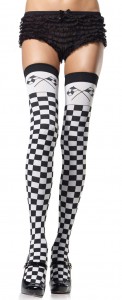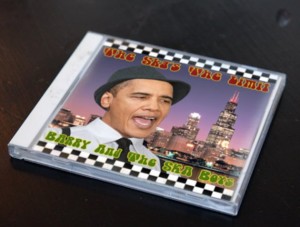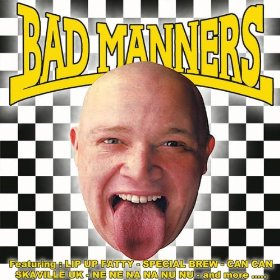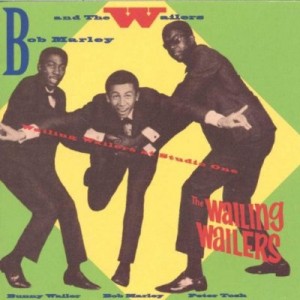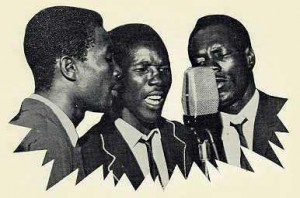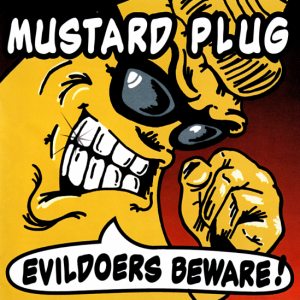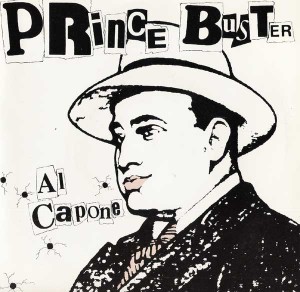Dis is Ska
The Story of Jamaican Music – From Ska to Reggae
After World War II, Jamaicans purchased radios in increasing numbers and were able to hear rhythm and blues music from Southern United States cities such as New Orleans by artists such as Fats Domino[12] and Louis Jordan.[13]
| Music of Jamaica | |
|---|---|
|
Kumina – Niyabinghi – Mento – Ska – Rocksteady– Reggae – Sound systems – Lovers rock – Dub –Dancehall – Dub poetry – Toasting –Raggamuffin – Roots reggae – Reggae fusion
|
|
| Anglophone Caribbean music | |
| Anguilla – Antigua and Barbuda – Bahamas –Barbados – Bermuda – Caymans – Grenada –Jamaica – Montserrat – St. Kitts and Nevis – St. Vincent and the Grenadines – Trinidad and Tobago – Turks and Caicos – Virgin Islands | |
| Other Caribbean music | |
| Aruba and the Dutch Antilles – Cuba – Dominica– Dominican Republic – Haiti – Hawaii –Martinique and Guadeloupe – Puerto Rico – St. Lucia – United States – United Kingdom |
The stationing of American military forces during and after the war meant that Jamaicans could listen to military broadcasts of American music, and there was a constant influx of records from the US. To meet the demand for that music, entrepreneurs such asPrince Buster, Clement “Coxsone” Dodd, and Duke Reid formed sound systems. As jump blues and more traditional R&B began to ebb in popularity in the early 1960s, Jamaican artists began recording their own version of the genres.[16] The style was of bars made up of four triplets but was characterized by a guitar chop on the off beat – known as an upstroke or skank – with horns taking the lead and often following the off beat skank and piano emphasizing the bass line and, again, playing the skank.[1] Drums kept 4/4 time and the bass drum was accented on the 3rd beat of each 4-triplet phrase. The snare would play side stick and accent the third beat of each 4-triplet phrase.[1] The upstroke sound can also be found in other Caribbean forms of music, such as mento and calypso.[17]
One theory about the origin of ska is that Prince Buster created it during the inaugural recording session for his new record label Wild Bells.[17] The session was financed by Duke Reid, who was supposed to get half of the songs to release. However, he only received one, which was by trombonist Rico Rodriguez.[citation needed] Among the pieces recorded were “They Got to Go“, “Oh Carolina” and “Shake a Leg“.[citation needed] According to reggae historian Steve Barrow, during the sessions, Prince Buster told guitarist Jah Jerry to “change gear, man, change gear.”[citation needed] The guitar began emphasizing the second and fourth beats in the bar, giving rise to the new sound. The drums were taken from traditional Jamaican drumming and marching styles. To create the ska beat, Prince Buster essentially flipped the R&B shuffle beat, stressing the offbeats with the help of the guitar. Prince Buster has explicitly cited American rhythm & blues as the origin of ska, specifically Willis Jackson‘s song “Later for the Gator”, “Oh Carolina”, and “Hey Hey Mr. Berry”.[18]
The first ska recordings were created at facilities such as Studio One and WIRL Records in Kingston, Jamaica with producers such as Dodd, Reid, Prince Buster, and Edward Seaga.[17] The ska sound coincided with the celebratory feelings surrounding Jamaica’s independence from the UK in 1962; an event commemorated by songs such as Derrick Morgan‘s “Forward March” and The Skatalites‘ “Freedom Sound.” Because the newly-independent Jamaica didn’t ratify the Berne Convention for the Protection of Literary and Artistic Works until 1994 copyright was not an issue, which created a large number of cover songs and reinterpretations. Jamaican musicians such as The Skatalites often recorded instrumental ska versions of popular American and British music, such as Beatles songs, Motown and Atlantic soul hits, movie theme songs, or surf rockinstrumentals. Bob Marley‘s band The Wailers covered the Beatles’ “And I Love Her“, and radically reinterpretedBob Dylan‘s “Like a Rolling Stone“.
Byron Lee & the Dragonaires performed ska with Prince Buster, Eric “Monty” Morris, and Jimmy Cliff at the 1964 New York World’s Fair. As music changed in the United States, so did ska. In 1965 and 1966, when American soul music became slower and smoother, ska changed its sound accordingly and evolved into rocksteady.[17][19]However, rocksteady’s heyday was brief, peaking in 1967. By 1968, ska evolved again into reggae.
SKA SKA SKA SKA SKA SKA SKA SKA SKA SKA SKA SKA SKA SKA SKA SKA SKA SKA SKA SKA MUSIC SKA SKA SKA SKA SKA SKA SKA SKA SKA SKA SKA SKA SKA SKA SKA SKA SKA MUSIC SKA SKA SKA SKA SKA SKA MUSIC SKA SKA SKA SKA SKA SKA SKA SKA SKA SKA SKA SKA SKA SKA SKA SKA SKA SKA SKA SKA SKA SKA SKA SKA SKA MUSIC SKA SKA SKA SKA SKA MUSIC SKA SKA SKA SKA SKA MUSIC SKA SKA SKA SKA SKA SKA SKA SKA SKA SKA SKA SKA SKA SKA SKA SKA SKA SKA SKA SKA SKA SKA SKA SKASKA SKA SKA SKA SKA SKA SKA SKA MUSIC SKA SKA SKA SKA SKA SKA SKA SKA SKA MUSIC SKA SKA SKA SKA SKA SKA SKA SKA MUSIC SKA SKA SKA SKA SKA SKA SKA SKA SKA MUSIC SKA SKA SKA SKA SKA SKA SKA SKA SKA SKA MUSIC SKA SKA SKA SKA SKA SKA SKA SKA SKA SKA SKA SKA SKA SKA SKA SKA SKA SKA SKA SKA SKA SKA SKA SKA SKA… MUSIChttp://ska-zine.blogspot.com/p/porkpie.html
